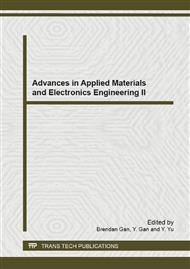p.212
p.217
p.222
p.226
p.230
p.234
p.238
p.242
p.246
Implementation of Microbial Fuel Cells (MFCs)-Based Wastewater Treatment
Abstract:
This paper provides feasibility estimation for actual domestic wastewater treatment under assumptions of a flow of 10,000 m3/d (about 40,000 capita), when air cathode MFCs configurations were adopted. Temperature-phased (mesophilic-ambient) process configurations in which can achieve either better effluent quality (i.e. maximizing treatment) or high energy recoveries is schematized. The performance used in the mass balance analysis of the treatment process conducted here compared with typical values in conventional biological wastewater treatment. Various advantages of using MFCs for wastewater treatment, including energy saving, less sludge production (and perhaps the lack of a need for a secondary clarifier), and no need for sludge handling, etc., were also addressed.
Info:
Periodical:
Pages:
230-233
Citation:
Online since:
April 2013
Authors:
Price:
Сopyright:
© 2013 Trans Tech Publications Ltd. All Rights Reserved
Share:
Citation:


